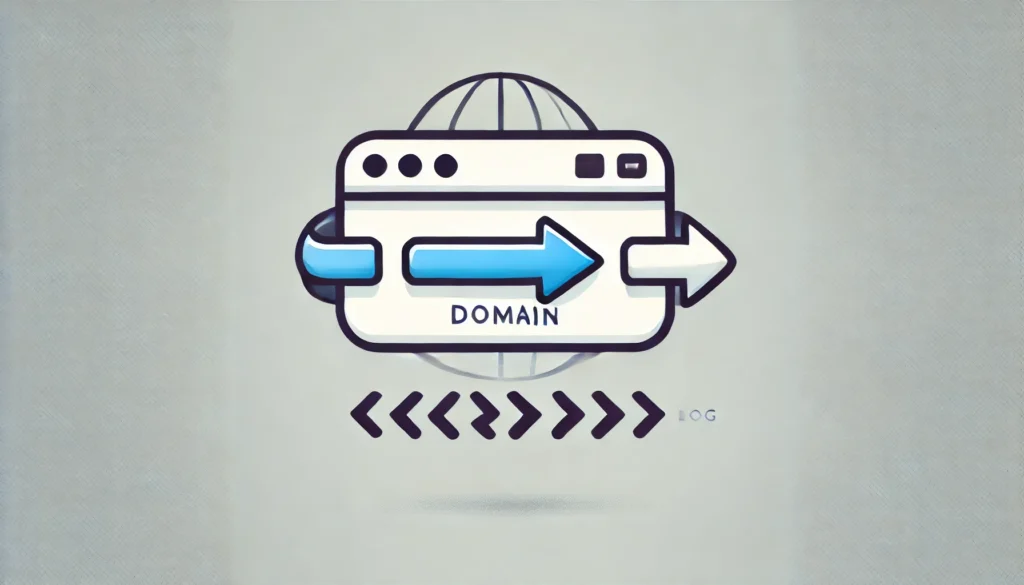Changing your blog domain can be a daunting task. Whether you’re rebranding, looking for a domain that better represents your blog’s identity, or switching to a domain that’s easier to remember, the process comes with risks — particularly when it comes to maintaining your hard-earned SEO and traffic. Many bloggers hesitate, worried about losing visibility, rankings, or even loyal readers.
The good news? With proper planning and execution, you can change your blog domain without losing traffic. This guide will walk you through every step, ensuring a smooth transition while preserving your SEO efforts and audience engagement.
Why Change Your Blog Domain?
There are several reasons why bloggers and website owners choose to change their domain:
- Rebranding: Aligning the domain with a new brand name or identity.
- Improved Domain Name: Switching to a domain that’s shorter, easier to spell, or more memorable.
- SEO Optimization: Adopting a domain that includes relevant keywords.
- Global Expansion: Transitioning from a country-specific domain (e.g., .uk, .au) to a .com or .org.
- Resolving Penalties: Starting fresh due to penalties on the old domain.
While these are valid reasons, domain changes can negatively impact your traffic if not handled carefully. Search engines need time to reindex and transfer authority to the new domain, and improper handling can result in lost rankings or broken user experiences.

Understanding the Risks: Why Traffic Can Drop During a Domain Change
Switching domains can disrupt:
- Search Engine Rankings: Google and other search engines need time to recognize and transfer rankings to the new domain.
- Backlinks: If your backlinks aren’t updated or redirected, you risk losing referral traffic and link equity.
- User Experience: Broken links or unfamiliar URLs can frustrate loyal readers and reduce repeat visits.
The key to avoiding these pitfalls is a meticulous approach that prioritizes SEO and user experience. Let’s dive into the step-by-step guide.
Step-by-Step Guide to Safely Changing Your Blog Domain
1. Preparation Steps
Before you make any changes, prepare thoroughly:
- Backup Your Content: Use your website hosting platform or a plugin to create a complete backup of your site’s content, images, and database.
- Analyze Current Performance: Use tools like Google Analytics and Google Search Console to identify your top-performing pages, keywords, and backlinks. Export this data for reference during and after the transition.
- Audit Your Current Domain: Check for existing SEO issues like broken links or crawl errors and resolve them before the move.
- Plan a Timeline: Choose a time with lower traffic to minimize disruptions and ensure you have sufficient time for monitoring and fixes.
2. Choose the Right New Domain
Pick a domain that aligns with your goals:
- Memorability: Ensure it’s easy to spell, type, and remember.
- Relevance: Incorporate keywords or branding elements.
- Authority: Avoid spammy or previously penalized domains (use tools like Wayback Machine and Google’s Transparency Report to check).
- Extension: Opt for trusted extensions like .com, .org, or .net for broader appeal.
3. Set Up 301 Redirects Properly
Redirects are crucial to preserve SEO and traffic:
- Map Old URLs to New Ones: Create a URL map that ensures every old URL redirects to its corresponding new URL. For example, oldsite.com/blog-post should redirect to newsite.com/blog-post.
- Implement 301 Redirects: Configure 301 (permanent) redirects in your .htaccess file or use a plugin if you’re on a CMS like WordPress.
- Test Redirects: Use tools like Screaming Frog to verify that all redirects work correctly.
- Avoid Chains: Ensure that redirects go directly to the final destination without unnecessary steps, as redirect chains can harm SEO.

4. Update Internal Links and External Backlinks
- Internal Links: Update links within your website to point to the new domain. Use site-wide search and replace tools if necessary.
- External Backlinks: Reach out to websites linking to your old domain and request updates to their links. Prioritize high-value backlinks, such as those from authoritative sites.
5. Inform Search Engines About the Change
Google and other search engines need to know about your new domain:
-
Google Search Console:
- Add and verify the new domain.
- Use the “Change of Address” tool to notify Google.
-
Submit Sitemaps:
- Create and submit an updated sitemap for the new domain.
- Keep the old sitemap live temporarily to assist search engines during the transition.
- Robots.txt Updates: Ensure that your robots.txt file is updated to reflect changes and doesn’t block critical pages.
6. Monitor Performance Post-Move
Keep a close eye on your website’s performance:
- Analytics: Monitor traffic, bounce rates, and conversions through Google Analytics.
- Search Console: Track indexing progress and resolve crawl errors promptly.
- Rank Tracking: Use SEO tools like Seo Tools AI (seotoolsai.org) to track keyword rankings and identify any drops.
- Fix Issues Promptly: Address 404 errors, missing pages, or misconfigured redirects immediately.
Adjust your strategy as needed and ensure all redirects, links, and content are functioning optimally.
7. Communicate With Your Audience
Transparency with your audience can help maintain loyalty:
- Announce the Change: Use blog posts, social media, and email newsletters to inform your audience about the domain change.
- Reassure Users: Explain the reasons for the change and provide clear instructions for updating bookmarks or saved links.

Top 10 Reasons Websites Experience Drops in Organic Traffic
Understanding why websites lose traffic can help you avoid common pitfalls during your domain switch. Here are the top causes:
- Improper Redirects: Failing to set up 301 redirects or misconfiguring them.
- Lost Backlinks: Backlinks not updated or redirected, leading to lost link equity.
- Indexing Issues: Search engines struggling to index the new domain.
- Crawl Errors: Broken links, 404 errors, or blocked resources.
- Duplicate Content: Both old and new domains showing identical content, triggering penalties.
- Changes in Content: Significant changes to content during the move that confuse search engines.
- DNS Propagation Delays: New domain taking time to propagate across the internet.
- Unoptimized Internal Links: Internal links pointing to the old domain.
- Neglecting Analytics: Lack of monitoring, making it hard to identify and fix issues.
- Search Console Misconfiguration: Not properly notifying search engines or submitting updated sitemaps.
Addressing these factors with care ensures your blog’s organic traffic remains stable.
Specific Advice for Blogs on Separate Domains
If your blog is hosted on a subdomain (e.g., blog.example.com) or a completely separate domain, the transition can be more complex. Here are key steps:
- Consolidate Content: Consider moving the blog to the main domain (e.g., example.com/blog) for better SEO benefits.
- Redirect Subdomain Traffic: Use 301 redirects to direct subdomain visitors to corresponding pages on the new domain.
- Preserve Subdomain Authority: If keeping the subdomain, ensure its authority transfers correctly by updating sitemaps, backlinks, and Search Console settings.
- Analyze Impact Separately: Monitor subdomain-specific traffic in analytics to ensure it transitions smoothly.
Conclusion
Changing your blog domain is a significant decision, but with careful planning, you can minimize risks and preserve your traffic. Remember, the key is to:
- Prepare thoroughly by analyzing your current performance and backing up your site.
- Set up proper 301 redirects and update internal and external links.
- Inform search engines promptly and monitor your site’s performance post-move.
- Engage your audience to maintain trust and loyalty.
By following this step-by-step guide, you’ll not only safeguard your traffic but also set your blog up for greater success under its new domain. So, the answer to “Can I Change My Blog Domain Without Losing Traffic?” is a resounding yes — with the right strategy and execution.

Leave a Reply